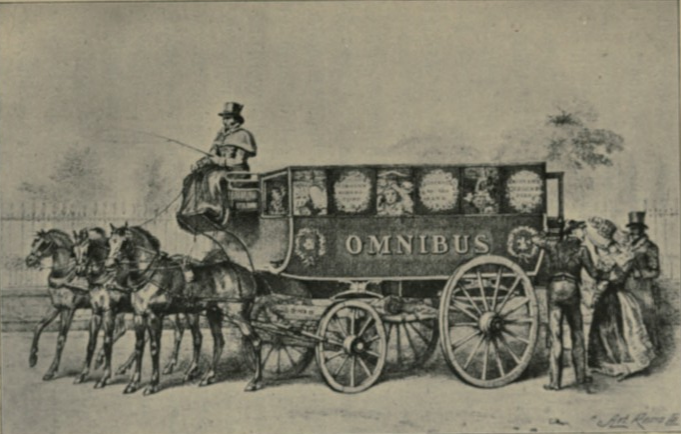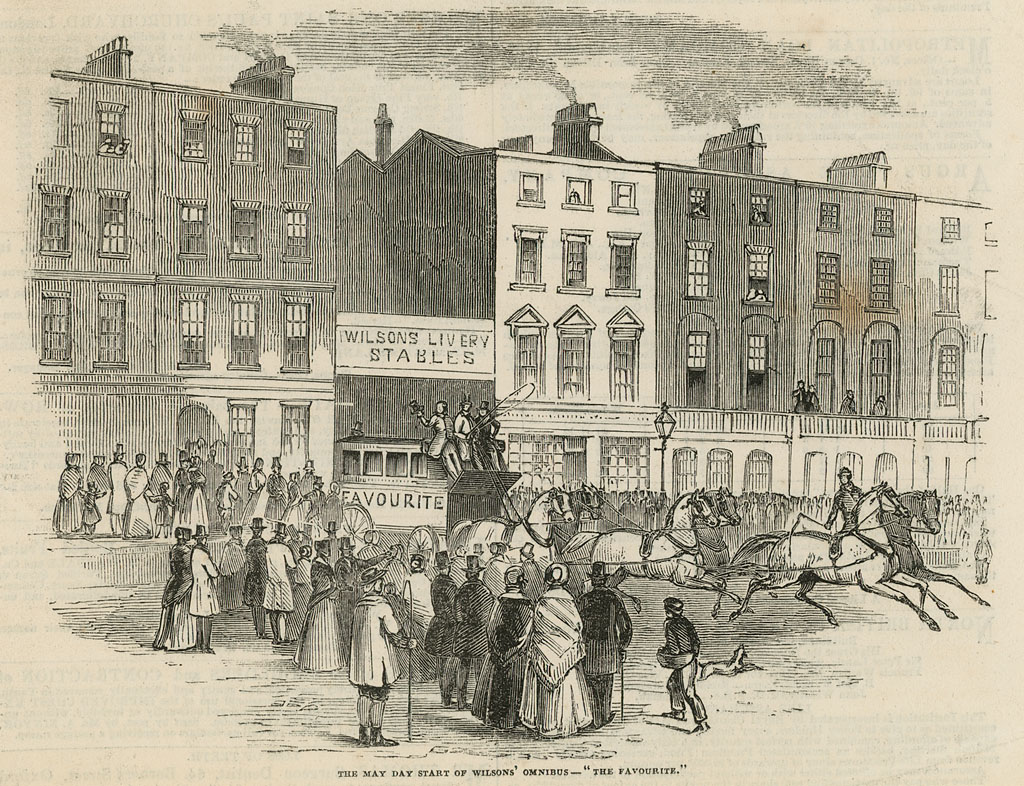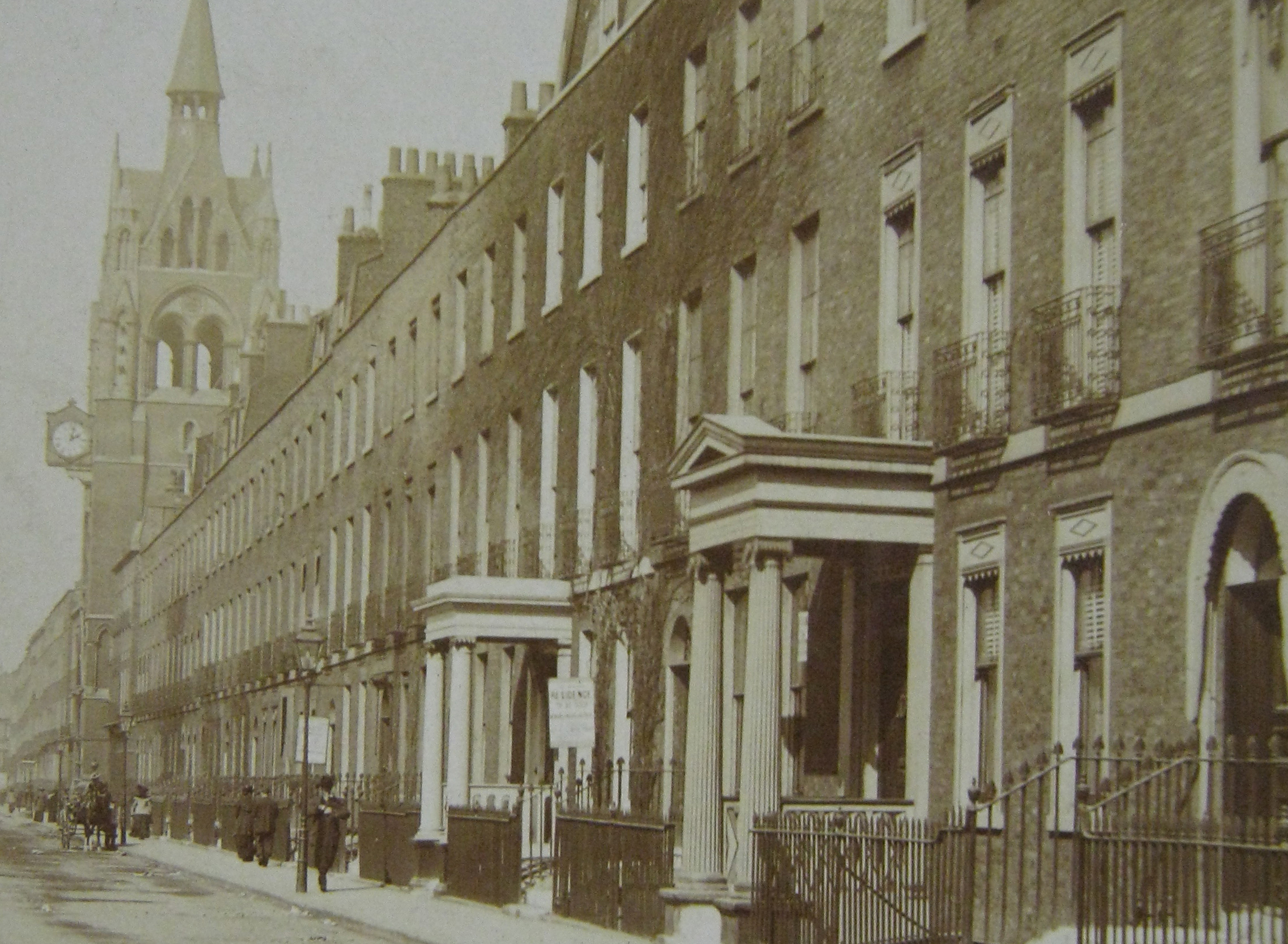A short time ago I was researching the history of a house in Highbury, north London, and discovered an intriguing character in the house during the 1860s. In 1863, Mr John Wilson and his wife Mary moved to the house, but by this time Mr Wilson had retired and it was only through delving into his past did I uncover the story of a remarkable career. It turns out that Mr John Wilson was one of the first omnibus proprietors in London.
Along with his sister Elizabeth, John Wilson established a thriving omnibus or horse bus business transporting clerks and city workers to and from the City of London from the growing suburbs of north London. The origins of the omnibus company have been tricky to track down, but later records show that John and his sister Elizabeth established the ‘Wilson’s Omnibus’, often known as the ‘Wilson’s Favorite [sic]’ sometime during the 1830s. By the time of the 1841 census John was recorded as a ‘Coach Proprietor’ in Finsbury, Islington, and along with his sister, ‘Mrs Wilson of Holloway’, owned one of the largest omnibus companies in London.
A painting by James Pollard shows the Wilson’s Favorite at Islington Green in 1852. Held in the London Transport Museum collection – follow the link below to view.
‘Favorite omnibus at Islington Green’ by James Pollard, 1852

The first omnibus service in London was established in 1829 by George Shillibeer, running from Paddington along Marylebone Road to the City, but it wasn’t long before other entrepreneurs were taking up the opportunity of offering transport to fee-paying passengers. In the early years omnibuses – or horse buses – were named (unlike numbered buses that we have today) and the Wilson’s was known as the ‘Favorite’ or ‘Favourite’. By 1839 Elizabeth and John Wilson were recorded as having 11 horse buses.
This was an ideal time to be investing in this new type of enterprise as the building of new streets and houses was beginning to spread to the outskirts of London, with growth in the north to places like Islington and Highbury, which meant there were many city workers who required transport to work. Islington was an ideal location for a new bus route and the Wilson’s became known for their bus route from north London into the City.

The Wilson’s Favorite became a popular and highly successful omnibus company. In 1853 John Garwood wrote in The Million-Peopled City that the Wilson’s ‘Favorite’ was ‘on the whole, as well regulated as, if not better than, any other which exists.’ The Wilson’s Omnibus even featured in Charles Dickens’ All the Year Round weekly journal, when in 1863 the writer told of how he would watch the ‘green favorites, boldly declaring the ownership of ‘Elizabeth and John Wilson’ – grand ‘buses, those, with drivers and conductors in green liveries, always renewed (with an accompaniment of nosegay for button-hole, and favours for whip, and rosettes for horses’ ears) on the occasion of the Queen’s birthday…’ In 1902, Henry Charles Moore states in his Omnibus and Cabs that ‘Mr Wilson was the largest proprietor in London, and his vehicles, which were known all over the Metropolis, had the reputation of being exceedingly well conducted.’
Another painting by James Pollard shows the Wilson’s Favorite in 1845. Held in the Museum of London collection – follow the link below to view.
‘A Street Scene with Two Omnibuses’ by James Pollard, 1845
In 1856 John and Elizabeth Wilson sold their omnibus company to the new and rapidly expanding ‘Compagnie Generale des Londres’ – renamed the London General Omnibus Company (LGOC) in 1858. The LGOC later became the biggest and most prominent omnibus company, buying up a number of local companies and spreading their presence across London. When the Wilson’s sold their firm they had over 50 horse buses, 500 horsed, and around 180 employees.
John Wilson died in the house in Highbury in 1866 leaving around £30,000 (well over £1 million in today’s money) to his wife Mary.



Reblogged this on Perfect Heritage.
Another very interesting story! Thank you.
Giuseppe Mazzini, the Italian republican, used the Wilsons’ line when visiting the Ashurst family in Muswell Hill. My understanding is that the bus took him from the City to the Angel Islington, and that he had to walk from there. He refers by name to Wilsons in a couple of letters in vol. III of the appendix to his complete works (March 22 1847, letter 361 and April 3 1847, letter 366). The works are ‘Scritti edition ed ineditti’ (1906-1943). The volume in question was published in 1939. Only 300 copies were printed. In the second of these letters, Mazzini jokes about a history of Muswell Hill he thinks of writing, in which there would be a chapter ‘on the Omnibus line so worthily superintended by Mrs. Wilson’. Both letters refer to the line as Mrs. Wilson’s. There’s no mention of Mr. Wilson.
Hello,
Thank you for your comment about the Wilson’s omnibus line in north London. That is fabulous to have a few further mentions and links to their omnibus route through Islington. Yes, you’re right about Mrs Wilson, which is believed to be John Wilson’s sister. In the records, he is recorded as ‘omnibus proprietor’ and I also found several references to ‘Mrs Wilson’ but a little more investigation is needed to piece together the full story of the Wilson family and all the details of their business. Thank you again for your comment! Melanie
Dear Melanie: In the course of my research I’ve come across heaps of information about the London houses in which the people I’m writing about lived. Most are in the Chelsea/Fulham area. Some were lived in (or visited by) well-known figures, notably Giuseppe Mazzini, Algernon Swinburne and James Whistler. Others are more run-of-the-mill, like the successive homes of Madam Venturi (Nee Emilie Ashurst), hostess of a Chelsea salon in her later years. I have not yet offered the book to a publisher, and I can’t see it being published before next year. Watch out for ‘Radical Sisters’. I’ll send you a copy of the near-final draft once I’ve landed a publisher.
Dear Charles,
Thank you for the notice about your book. I will certainly keep my eyes out for it.
All the best,
Melanie